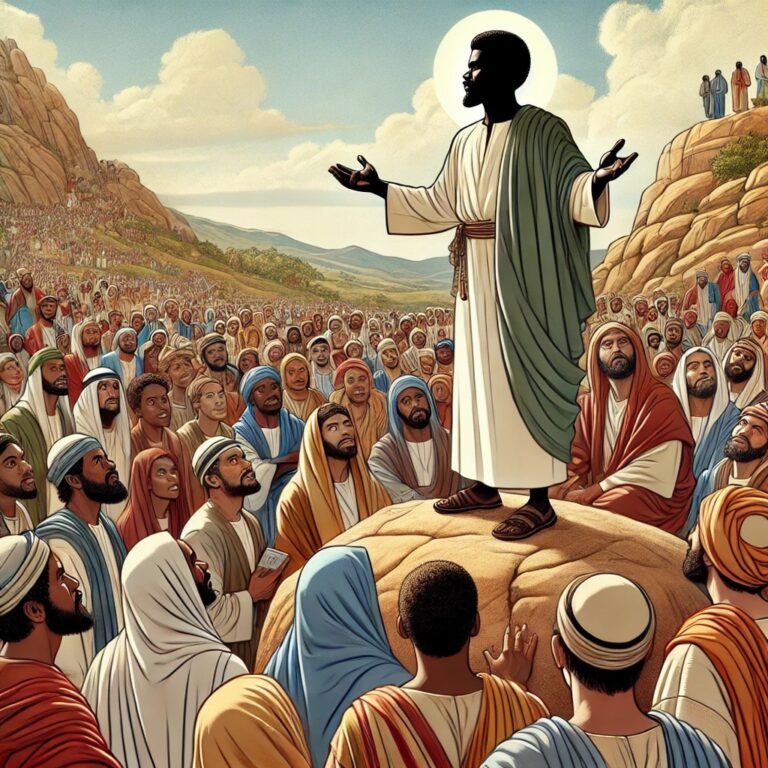In the vast tapestry of religious thought, the Bahá’í Faith emerges not merely as a point on the map but as a transformative interplay of divine narratives, bridging the chasm between disparate spiritual heritages. In considering the question, “Did Bahá’u’lláh fulfill the prophecies of Jesus?” we embark on an intellectual odyssey that sweeps across centuries, cultures, and theological constructs, culminating in a profound appreciation for the unifying vision that Bahá’í teachings illuminate.
The life of Jesus Christ, often characterized by parables and prophetic utterances, delineates a path laden with spiritual significance and eschatological expectations. These prophecies have been scrutinized over millennia, their meanings unfurling like petals of an ever-blooming flower. Among these prophetic allusions, particularly noteworthy are those that suggest the advent of a “Promised One,” a figure who would arise to fulfill divine mandates and shepherd humanity towards unity. Within the Bahá’í framework, this Promised One is none other than Bahá’u’lláh, a claim that invites both contemplation and inquiry.
To appropriately navigate this discussion, one must first articulate the contours of Jesus’ prophecies. In Christian eschatology, the notions of the “Second Coming” and the “Return” hold a pivotal place. These concepts are often interpreted through a lens of expectation, mirroring the desires and hopes of countless believers who yearn for divine intervention and the establishment of a promised age of peace. However, Bahá’í teachings usher forth an expansive interpretation; rather than a singular, literal second coming, the anticipated return is perceived as a metaphorical and spiritual renewal. Herein lies a fundamental departure—the Bahá’í perspective emphasizes the continuity of divine revelation, asserting that Bahá’u’lláh embodies this spiritual return.
Through the Bahá’í lens, the prophetic pronouncements of Jesus are reframed. Bahá’í scripture elucidates that Jesus was not only the bearer of a singular message but a forerunner within a continuum of prophetic voices that includes figures such as Muhammad, Moses, and, subsequently, Bahá’u’lláh himself. The teachings advocate for a cyclical understanding of divine guidance, where each manifestation reflects the essence of God tailored to the exigencies of the time. Thus, the question of fulfillment transcends the mere act of prophecy; it encompasses a broader dialogical engagement with the divine.
Moreover, the concept of the “Promised One” is intricately linked to the fulfillment of moral and spiritual service. In this regard, Bahá’u’lláh articulated principles that resonate with the core teachings of Jesus, accentuating themes such as love, justice, and unity. The Beatitudes, with their promise of blessings upon the meek and the peacemakers, serve as an archetypical model for Bahá’í teachings, where the elevation of the human spirit is paramount. The alignment of both Jesus and Bahá’u’lláh on these cardinal virtues illustrates a harmonious intersection—a divine resonance amidst the cacophony of worldly discord.
Critics may challenge the Bahá’í position, positing that the differentiation between Jesus’ teachings and Bahá’u’lláh’s revelations may undermine the latter’s claim to fulfillment. However, this perspective neglects the nuanced understanding that the essence of each Manifestation is consistent: the divine message is vibrant and adaptable, shifting as the context dictates while maintaining an intricate web of continuity. To perceive Bahá’u’lláh in this light is to recognize not only the fulfillment of prophecy but also the unveiling of a deeper layer of spiritual reality.
Furthermore, the unique appeal of Bahá’í teachings lies in their encompassing embrace of diversity. The Prophecies of Jesus are not discarded; rather, they are woven into an overarching narrative that champions inclusive dialogue across faith traditions. The Bahá’í perspective is not insular but expansive, inviting collaborative exploration among adherents of varied backgrounds. This bridges divides, fostering mutual respect and understanding—an ethos that Jesus espoused fervently during his earthly ministry.
The metaphor of a tapestry serves well to encapsulate this interplay of divine messages. Just as distinct threads contribute to a cohesive whole, the Bahá’í interpretation regards the words of Jesus and Bahá’u’lláh as integral elements of a singular divine narrative. Each revelation, while distinct, is a thread woven into the overarching fabric of divine purpose. When examined in this light, Bahá’u’lláh’s mission can be viewed as a continuation—a further embellishment upon the tapestry whose origins can be traced back to the prophetic declarations made by Jesus.
In summation, the inquiry into whether Bahá’u’lláh fulfilled the prophecies of Jesus invites an exploration rooted in both faith and intellectual rigor. The titles of “Promised One” and “Second Coming” are not mere considerations of doctrinal correctness but invitations to engage with the profound essence of humanity’s spiritual journey. By understanding Bahá’u’lláh as a fulfillment of Jesus’ prophecies, adherents find resonance in the teachings that advocate unity, justice, and love—a triad that transcends cultural and religious boundaries. Thus, the interplay between these two exalted figures fosters a monumental understanding of divine continuity, echoing the timeless pursuit of truth that unites all humanity.
